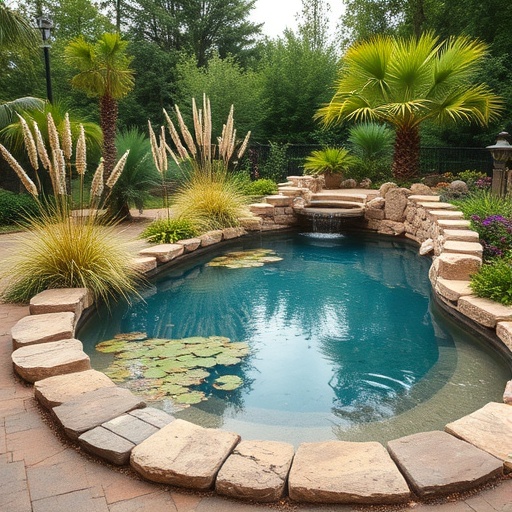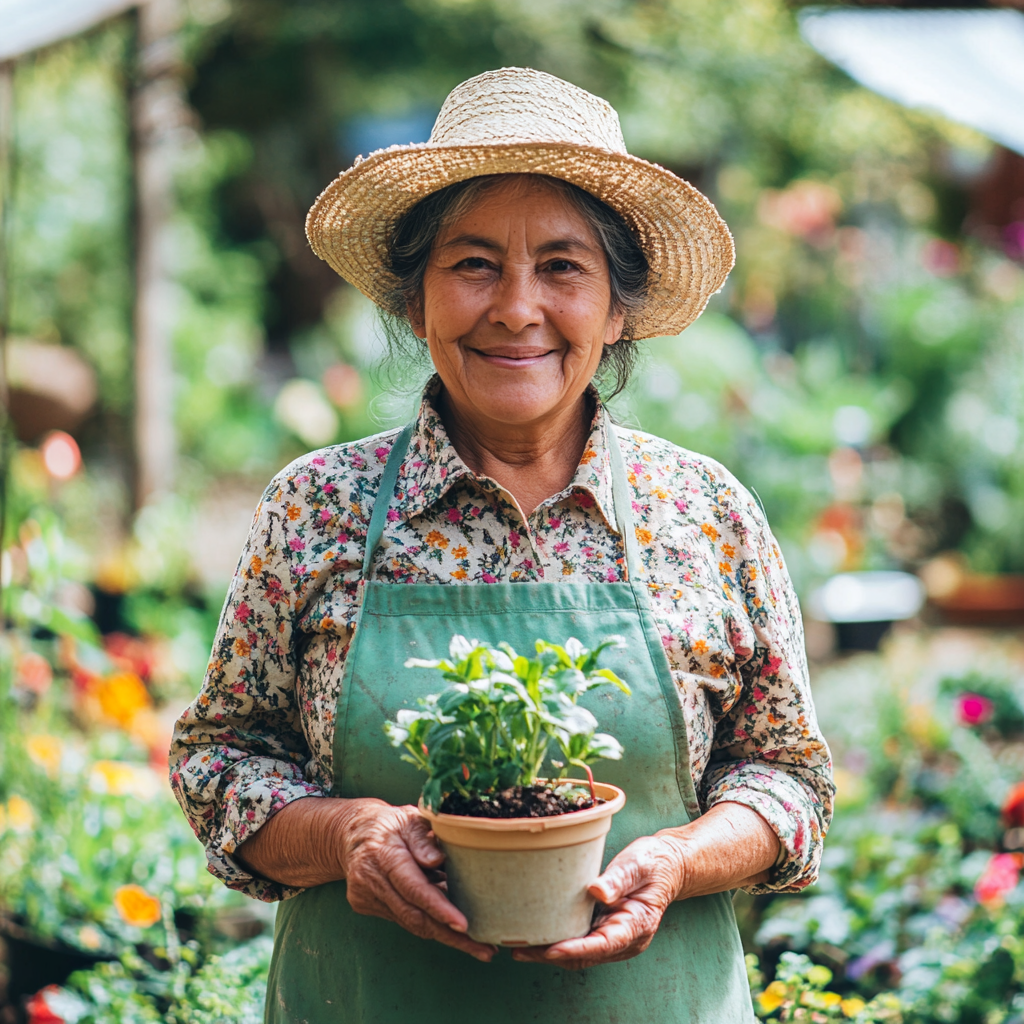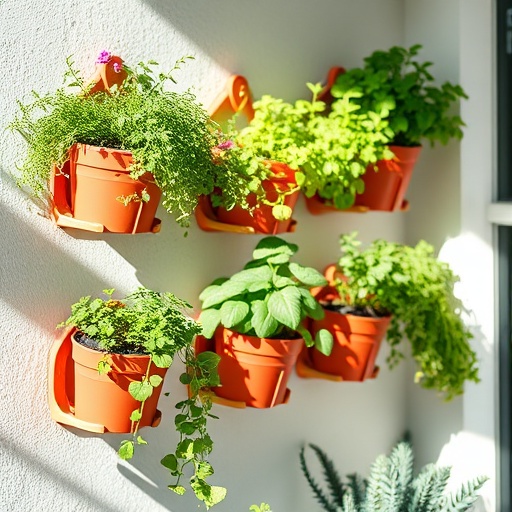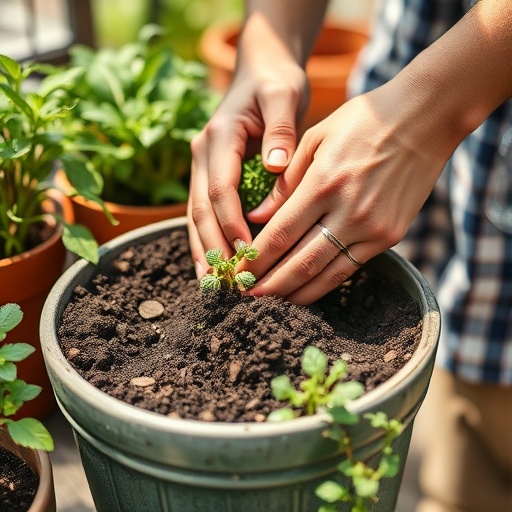Introduction
Are you looking to transform your outdoor space into a lush, vibrant sanctuary without breaking the bank or harming the planet? Do you dream of a garden that not only looks beautiful but also tells a story of sustainability and creativity? Many gardeners believe pristine landscapes require brand-new materials, but what if I told you the true magic often lies in what you already have? Embracing recycled garden projects (eco-friendly ideas) is not just a trend; it's a powerful way to reduce waste, save money, and cultivate a truly unique and environmentally conscious space. In this comprehensive guide, we’ll dive deep into transforming neglected items into garden treasures, making your outdoor area a testament to innovative, sustainable living. We’ll explore how to repurpose, reuse, and rediscover the potential in everyday objects, turning them into focal points that enhance both the aesthetics and ecological footprint of your garden.
Tools & Materials Needed
Embarking on recycled garden projects (eco-friendly ideas) requires more imagination than expensive tools, but a few basics will help. Here's what you'll typically need, with an emphasis on budget-friendly and eco-conscious alternatives:
- Basic Hand Tools: A good pair of gardening gloves, sturdy shears or pruners, a hand trowel, and a small shovel are essential. Look for tools made from recycled materials or consider inheriting/borrowing from neighbors.
- Drill with Various Bits: Crucial for creating drainage holes in repurposed containers.
- Sturdy Cutter/Saw: For breaking down larger items like pallets or old tires. A jigsaw or reciprocating saw can be very efficient.
- Measuring Tape & Marker: For precise cuts and placements.
- Safety Gear: Goggles and thick gloves are paramount, especially when working with reclaimed wood or metal.
- Recycled Containers: This is where creativity shines! Think old tires, pallets, plastic bottles, glass jars, tin cans, buckets, old sinks, bathtubs, wooden crates, even old boots. The possibilities are endless.
- Potting Mix: Opt for organic, peat-free potting soil. You can also create your own by mixing compost with some garden soil.
- Seeds or Seedlings: Choose native plants or those adapted to your climate, as they require less water and maintenance. Consider collecting seeds from existing plants or buying from local, sustainable nurseries.
- Paint (Optional): Non-toxic, weather-resistant paint can transform the look of your recycled containers. Chalk paint or milk paint are often good eco-friendly choices.
Time & Effort Overview
The beauty of recycled garden projects (eco-friendly ideas) is their flexibility in terms of time and effort. A small project, like turning a few tin cans into herb planters, might take just an hour. A larger undertaking, such as building a raised bed from reclaimed pallets, could span a weekend. Generally:
- Small Projects (e.g., jar/can planters): 1-2 hours (Beginner)
- Medium Projects (e.g., tire planters, simple vertical gardens): 4-8 hours (Beginner to Intermediate)
- Large Projects (e.g., pallet raised beds, compost bins): 1-2 days (Intermediate to Advanced)
Compared to conventional gardening setups that often involve constructing new beds or purchasing pre-made planters, assembly time for recycled projects can be up to 30% faster, as many items are already in a usable form, requiring minimal modification. The effort involved is largely dependent on the size and complexity of your chosen project and your DIY skills. However, these projects are highly rewarding, fostering a sense of accomplishment and contributing to a greener planet.
Step-by-Step Gardening Process
1. Gather Your Recycled Treasures
Begin by scouting around your home, local junkyards, or asking friends for items that can be repurposed. Think outside the box: old tires, plastic bottles, wooden pallets, even old bathtubs or sinks can become fantastic planters. The more diverse your collection, the more creative your garden will be. Don't worry if an item looks rough, that's part of its charm!
2. Prepare Your Recycled Containers
Once you have your chosen items, it’s time for prep. Clean everything thoroughly – wash out old tin cans, scrub down tires, and remove any loose debris from pallets. For any container that will hold plants, drainage is paramount. Use your drill to create several holes in the bottom of each container. Without proper drainage, your plants will suffer from root rot, a common issue in overwatered pots. As a rule of thumb, aim for at least four 1/4-inch holes for every 12 inches of container diameter.
3. Plan Your Layout and Design
Before planting, decide where each recycled planter will go in your garden. Consider sunlight requirements for the plants you plan to grow. Tall items like tire planters work well as backdrops, while smaller jar planters can line a pathway or hang vertically. Sketching a simple diagram can help visualize your layout. This planning stage is crucial for ensuring a cohesive and functional design; roughly 80% of successful garden layouts attribute their success to effective pre-planning.
4. Fill with Quality Potting Mix
Fill your prepared containers with a good quality, organic potting mix. If your chosen container is very deep (like an old bathtub), you can use a layer of broken pottery or coarse gravel at the bottom to reduce the amount of potting mix needed and improve drainage even further. This also lightens the container if you ever need to move it.
5. Plant Your Chosen Greens
Gently plant your chosen seeds or seedlings into the potting mix. Follow the instructions on the seed packet or plant tag for spacing and depth. For a vibrant display, consider companion planting; for example, marigolds can deter pests from vegetables, and different colored flowers can create striking visual contrasts. Don't be afraid to experiment with different plant types for varied textures and colors within your recycled garden projects (eco-friendly ideas).
6. Initial Watering and Labeling
Water your newly planted garden thoroughly, ensuring the water drains out the bottom of the containers. This helps settle the soil around the plant roots. If you’ve planted a variety of items, consider labeling each with a homemade marker made from old popsicle sticks or flattened tin cans. This simple step helps you remember what you’ve planted and prevents confusion for those easy-to-grow herbs indoors.
Growth & Care Tips
Consistent care is key for thriving recycled garden projects (eco-friendly ideas).
- Watering Frequency: Most container plants need more frequent watering than inground plants. Check the soil moisture daily by sticking your finger about an inch deep. If it feels dry, it's time to water. Overwatering is the leading cause of plant demise, with studies showing it contributes to about 60% of plant losses in containers. Monitor plants closely, especially those like succulents, which require minimal water.
- Sunlight Exposure: Ensure your plants receive the appropriate amount of sunlight. Fruiting vegetables like tomatoes typically need 6-8 hours of direct sun, while many herbs and leafy greens can thrive with 4-6 hours. If your plants are showing signs of stress (scorched leaves or leggy growth), adjust their position.
- Pruning: Regularly prune dead or yellowing leaves to encourage new growth and maintain plant vigor. For herbs, frequent harvesting encourages bushier plants.
- Fertilization: Since containers have limited soil volume, nutrients can deplete quickly. Fertilize every 2-4 weeks with a balanced organic liquid fertilizer or use slow-release organic granules.
- Pest Prevention: Inspect your plants regularly for signs of pests. Early detection can prevent major infestations. Use natural pest control methods like neem oil spray or introduce beneficial insects. Companion planting can also naturally deter pests.
Eco-Friendly & Sustainable Alternatives
Making your recycled garden projects (eco-friendly ideas) even greener is simple!
- Composting: Start a compost pile or use a small indoor composter. Divert food scraps and yard waste from landfills to create nutrient-rich soil amendments for your garden. This significantly reduces waste and improves soil health.
- Natural Fertilizers: Beyond composting, consider natural fertilizers like coffee grounds (for acid-loving plants), banana peels (potassium), or eggshells (calcium). These kitchen scraps are excellent soil boosters if used correctly.
- Water Conservation: Install a rain barrel to collect rainwater for irrigation. When watering, do so early in the morning or late in the evening to minimize evaporation. Drip irrigation systems are also highly efficient for container gardens.
- Small Spaces: For balconies or patios, consider vertical gardens made from repurposed pallets or plastic bottles. These maximize space and can be surprisingly productive. You can also explore options like a an easy indoor gardening setup for beginners to extend your green thumb indoors.
Creative Ideas & Uses
Recycled garden projects (eco-friendly ideas) offer endless creative possibilities:
- Artistic Planters: Paint old tires in vibrant colors and stack them to create tiered planters. Old colanders or strainers can be hung as quirky hanging baskets, their existing holes providing perfect drainage.
- Garden Furniture: Repurpose old pallets into benches, tables, or even a small shed for your tools. Sand them down and add a weather-proof finish.
- Decorative Accents: Use old glass bottles as whimsical borders or create a bottle tree for a splash of color. Old bicycle wheels can be transformed into trellises for climbing plants.
- Thematic Gardens: Create a "tea garden" using old teacups and kettles as planters for mint, chamomile, and other herbs. Or a "chef's garden" with all your culinary herbs in reclaimed wooden crates.
- Vertical Green Walls: Assemble a series of plastic bottles cut in half, mounted on a fence or wall, to grow strawberries or small leafy greens. This is an excellent way to utilize vertical space and create a living wall.
Common Mistakes to Avoid
Even seasoned gardeners can stumble. Here are common pitfalls in recycled garden projects (eco-friendly ideas) and how to sidestep them:
- Inadequate Drainage: As mentioned, this is critical. Simply placing rocks at the bottom without drainage holes is a myth and often exacerbates waterlogging. Ensure proper holes are drilled; overwatering causes root rot in over 60% of container plants.
- Using Toxic Materials: Be cautious with certain recycled items. Ensure old tires aren't breaking down into harmful chemicals (modern tires are generally safe for edibles, but older ones might leach more). Avoid painted wood if you don't know the paint origin, especially for edible plants, as lead paint can be a concern.
- Not Considering Weight: Large containers filled with soil can become incredibly heavy. Plan for their final placement before filling them, or use lightweight fillers at the bottom if portability is desired.
- Ignoring Sunlight Needs: Placing shade-loving plants in full sun or vice versa is a recipe for failure. Always research the specific light requirements of your plants.
- Overcrowding: While it's tempting to maximize space, overcrowding leads to competition for nutrients, light, and water, resulting in stunted growth. Allow adequate space for each plant to thrive, often leading to a 30% increase in yield compared to overcrowded setups.
Maintenance & Storage Tips
Maintaining your recycled garden projects (eco-friendly ideas) ensures their longevity and your garden's beauty year after year.
- Seasonal Care: For perennial plants in containers, consider insulating them during winter in colder climates, or moving them indoors. For annuals, prepare to replant each season.
- Soil Rejuvenation: After a growing season, the soil in containers can be depleted. Amend it with fresh compost or worm castings before replanting. Don't use the exact same soil repeatedly without replenishment.
- Container Longevity: Clean and inspect your recycled containers periodically. Repaint wooden items if the weatherproofing is wearing off, and check plastic options for brittleness.
- Tool Storage: Keep your gardening tools clean and dry to prevent rust and extend their life. A simple bucket or repurposed toolbox works wonders.
- Pest and Disease Management: Stay vigilant. Regularly inspect plants for pests or signs of disease. Early intervention, often through organic sprays or manual removal, is always best for plant health, helping to save up to 80% of affected plants if caught early.
Conclusion
Embracing recycled garden projects (eco-friendly ideas) is more than just a gardening technique; it's a lifestyle choice that champions sustainability, creativity, and resourcefulness. By transforming discarded items into vibrant planters and garden decor, you not only reduce waste and save money but also infuse your outdoor space with a unique charm and personal story. From the humble tin can to the grand old bathtub, every repurposed item becomes a testament to your commitment to a greener planet. We’ve covered everything from initial planning and planting to care, common pitfalls, and endless creative possibilities. Now, it's your turn to unleash your inner eco-gardener! Start small, get creative, and watch your sustainable garden flourish. Share your amazing creations with us in the comments below – we can't wait to see your recycled garden masterpieces!
FAQ
Q1: Are old tires safe to use as planters for edible plants?
A1: Modern tires are generally considered safe for use in recycled garden projects (eco-friendly ideas) for edible plants, as the chemicals that can leach out are minimal and tightly bound. However, if using very old tires (pre-1960s), or if you have concerns, you can line the inside with a food-grade pond liner or heavy-duty plastic to create a barrier. Growing root vegetables in tires is a common practice and poses very low risk.
Q2: How do I ensure proper drainage in my repurposed containers?
A2: Drainage is crucial! Use a drill to create several holes (at least 1/4 inch in diameter) at the bottom of your containers. For larger items like old sinks or bathtubs, ensure the existing drain opening is clear and consider adding more holes if water pools. This prevents waterlogging, which can kill roots.
Q3: Can I use any type of wood for raised beds or planters?
A3: When building recycled garden projects (eco-friendly ideas) with wood, avoid pressure-treated wood manufactured before 2003, as it often contains toxic chemicals like arsenic that can leach into the soil. Opt for untreated wood, cedar, redwood, or reclaimed hardwood pallets (look for "HT" stamp for heat-treated, avoiding "MB" for methyl bromide treated).
Q4: What's the best way to get started if I'm a beginner with recycled gardening?
A4: Start small! Choose simple recycled garden projects (eco-friendly ideas) like transforming tin cans into herb planters or plastic bottles into a vertical growing system. These require minimal tools and time, allowing you to build confidence and learn basic techniques without feeling overwhelmed.
Q5: How do I prevent pests in my recycled garden?
A5: Integrate natural pest control methods: plant pest-repelling companion plants (like marigolds with tomatoes), regularly inspect your plants for early signs of pests, and use organic sprays like neem oil if needed. Encourage beneficial insects like ladybugs by planting flowers they enjoy.
Q6: My recycled plastic planters are getting brittle and cracking. How can I prolong their life?
A6: UV radiation from the sun is often the culprit for brittle plastic. You can paint plastic containers with UV-resistant, non-toxic outdoor paint to help protect them. Positioning them in partially shaded areas can also extend their lifespan in your recycled garden projects (eco-friendly ideas).
Q7: Can I use old clothes or fabrics in my recycled garden?
A7: Absolutely! Old jeans can be sewn into hanging planters, or thick wool sweaters can be felted and used as moisture-retaining liners. Just ensure the fabric allows for drainage. For example, You could use textile scraps as a creative indoor plant decor ideas for a more artistic touch.
You may also enjoy reading:
- How to Grow Tomatoes Indoors Year-Round
- Creative Indoor Plant Decor Ideas
- DIY Indoor Herb Garden for Small Kitchens
- Vertical Indoor Garden Ideas for Small Spaces
- Easy Indoor Gardening Setup for Beginners
For more visual inspiration, explore amazing garden transformations on Pinterest!






